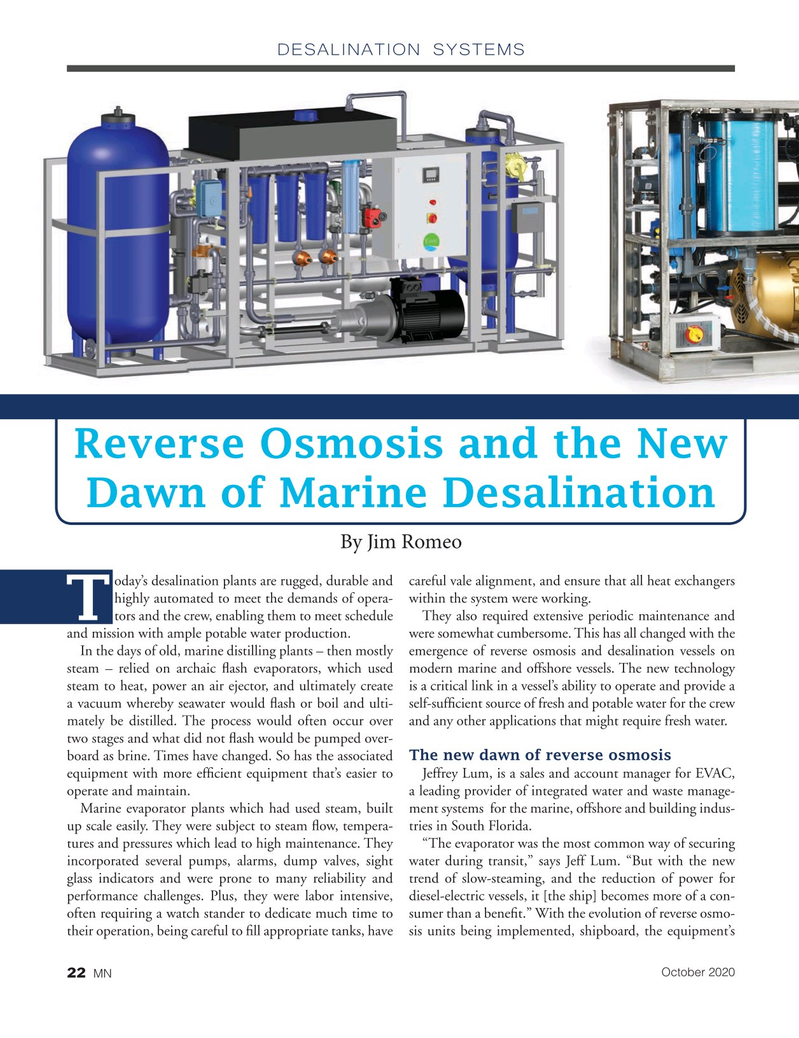
Page 22: of Marine News Magazine (October 2020)
Shipbuilding & Repair
Read this page in Pdf, Flash or Html5 edition of October 2020 Marine News Magazine
DESALINATION SYSTEMS
Reverse Osmosis and the New
Dawn of Marine Desalination
By Jim Romeo oday’s desalination plants are rugged, durable and careful vale alignment, and ensure that all heat exchangers highly automated to meet the demands of opera- within the system were working.
tors and the crew, enabling them to meet schedule They also required extensive periodic maintenance and
T and mission with ample potable water production. were somewhat cumbersome. This has all changed with the
In the days of old, marine distilling plants – then mostly emergence of reverse osmosis and desalination vessels on steam – relied on archaic ? ash evaporators, which used modern marine and offshore vessels. The new technology steam to heat, power an air ejector, and ultimately create is a critical link in a vessel’s ability to operate and provide a a vacuum whereby seawater would ? ash or boil and ulti- self-suf? cient source of fresh and potable water for the crew mately be distilled. The process would often occur over and any other applications that might require fresh water. two stages and what did not ? ash would be pumped over- board as brine. Times have changed. So has the associated The new dawn of reverse osmosis equipment with more ef? cient equipment that’s easier to Jeffrey Lum, is a sales and account manager for EVAC, operate and maintain. a leading provider of integrated water and waste manage-
Marine evaporator plants which had used steam, built ment systems for the marine, offshore and building indus- up scale easily. They were subject to steam ? ow, tempera- tries in South Florida.
tures and pressures which lead to high maintenance. They “The evaporator was the most common way of securing incorporated several pumps, alarms, dump valves, sight water during transit,” says Jeff Lum. “But with the new glass indicators and were prone to many reliability and trend of slow-steaming, and the reduction of power for performance challenges. Plus, they were labor intensive, diesel-electric vessels, it [the ship] becomes more of a con- often requiring a watch stander to dedicate much time to sumer than a bene? t.” With the evolution of reverse osmo- their operation, being careful to ? ll appropriate tanks, have sis units being implemented, shipboard, the equipment’s
October 2020 22 MN

 21
21

 23
23
